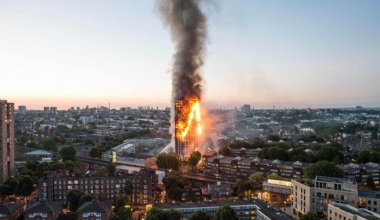High Rise Fire Safety

High rise fire safety comes into focus for Manchester
As experts in block management in Manchester and the North, we’ve been keeping a close on high rise fire safety issues in the news – an obvious and necessary side-effect of the Grenfell disaster in London last year.
With Andy Burnham, Greater Manchester’s Mayor, and his Salford counterpart Paul Dennett both pushing for government assistance in addressing high rise fire safety concerns for local residents, a recent article in the Salford Star has once again highlighted the importance of implementing compliant safety measures in residential apartment blocks.
The cost of poor block management
Manchester’s skyline is dominated by high rise properties, and like many other cities, the Grenfell fire made residents and owners alike take stock of the potential risks in their own buildings.
While the bottom line may be the focus figure for high rise developers, for residents, the cost of life at Grenfell is the number that really sticks.
The BRE report into the disaster* revealed the ease with which a fire can quickly spread when preventative and protective mechanisms haven’t been adequately implemented. From a small fridge fire in Flat 16 to a towering inferno, the world watched in horror as the fire flamed up, down and across the facade, igniting – according to the report – either:
- The “highly combustible” polythene core of the aluminium cladding
- The “combustible” foam insulation
- The “flammable” materials around the window frame
However, findings suggest that rather than just one of these elements being the issue for the fierce spread of the fire, there’s a distinct possibility that actually, a combination of these things happened simultaneously.
Other key issues that contributed to the spread of the fire that came out in the report were:
- The kitchen window in Flat 16 breached building regulations, failing to provide a “substantial barrier” between the interior and the facade
- A lack of appropriate cavity barriers meant that the flames entered the cavity between the concrete and facade
Whether fire safety measures are installed at the time of construction, or whether further works require a reassessment of compliance, it’s the responsibility of everyone involved in the building, ownership or management of high rise residential blocks to ensure that something like this doesn’t happen again.
And now, after a Freedom of Information request made to the Greater Manchester Fire and Rescue Service (GMFRS) by the Salford Star – and the subsequent release of this information – high rise fire safety issues have hit a little closer to home…
High rise fire safety risks in over 3/4 of Salford’s residential blocks
The Freedom of Information request made by the paper documented the results of inspections carried out on 110 apartment blocks across the Manchester metropolitan borough by the GMFRS.
Just 26 blocks fell within the ‘broadly compliant’ category, with the other 84 given an action plan or deficiency notice – and if these are the results in one borough, you can start to appreciate the scale of the problem city-wide.
These types of figures are sure to ‘fan the flames’ of Andy Burnham and Paul Dennett’s campaign for fire safety funding.
Independent Review of Building Regulations and Fire Safety
The campaigning of Andy Burnham and Paul Dennett is set to continue as the crisis of high rise fire safety continues to unfold. One big concern is that local authorities and housing providers are faced with huge costs to replace dangerous cladding, and leaseholders will end up suffering from an increase in service charges in order to absorb these costs.
Dennett comments that the government: “…has yet to take full responsibility for this serious national issue”, while Burnham adds: “Government has already failed to provide local authorities and social landlords with additional funds to carry out fire safety works and now hard-pressed residents are faced with increases in service charge bills.”
With both mayors fully onboard with the Independent Review of Building Regulations and Fire Safety, they’re hoping to see new legislation rise from the ashes of the Grenfell disaster, in order to put fire safety at the centre of building planning, design and construction.
However, while local housing authorities and associations have stated that they won’t pass on the costs of improving high rise fire safety measures, it remains to be seen whether the private sector will follow suit.


